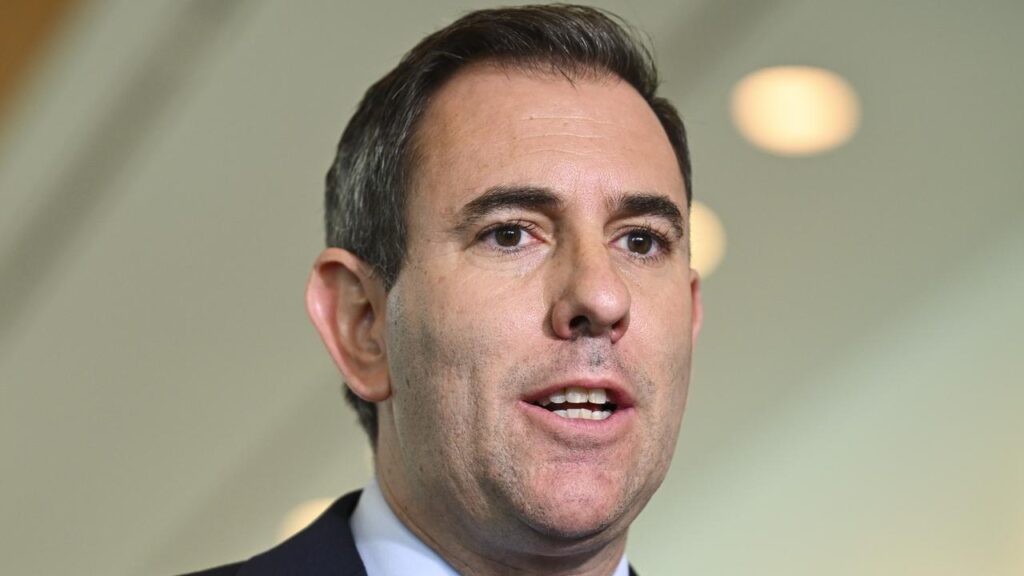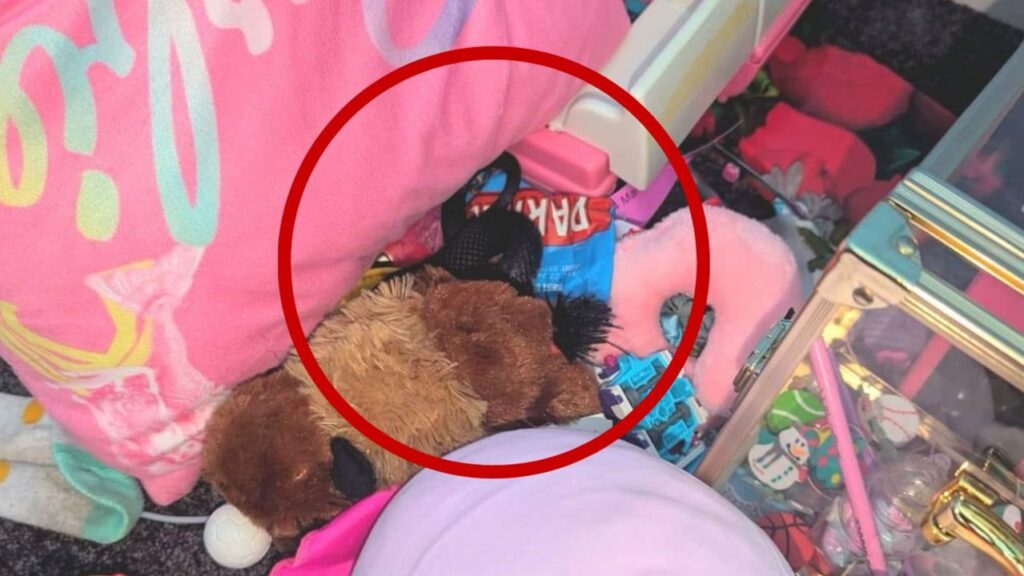Riskiest suburbs to buy real estate revealed
Written by admin on August 30, 2024
Some of Australia’s most sought after suburbs have appeared on a property industry blacklist of markets investors have been warned to avoid due to a higher risk of coming price falls.
The 111 suburbs declared “no-go zones” for buyers by national investment advisory group Positive Property were a mix of high-density inner city areas, regional coastal towns and suburbs that boomed after the pandemic.
The No Go Zones report was based on analysis of multiple economic metrics and housing market indicators across nearly 15,000 Australian suburbs, along with council and building data.
Report author George Markoski, a buyer’s agent and highly successful investor, said suburbs flagged in the research were the “bottom markets” for investors.
“If you buy in a no-go zone, you could lose money,” he said.
MORE: ‘Don’t do it!’: Renos that make your home harder to sell
The annual report, normally dominated by mining towns and lightly populated rural centres, was unusual this year in that it included predominantly suburbs in capitals and major regional centres.
Perth accounted for the most suburbs on the list at 27, followed by the Gold Coast with 13 (with an extra suburb in neighbouring Tweed) and Sydney with 11.
Seven of the no-go zones were in Cairns, six were in Adelaide and five were in Western Australian town Mandurah. Melbourne had four suburbs, while Canberra, Townsville and Broome (WA) had three.
Other centres with at least two black-listed suburbs were the Sunshine Coast, Darwin, Bunbury (WA) and Port Hedland (WA).
Mr Markoski said a common national theme among the markets on the no-go zones list was a higher supply of housing at a time when buyer demand was diminishing.
MORE: Landlords’ brutal snub after mum loses husband
Many of these areas had also seen considerable growth in recent years, which market indicators suggested was not likely to continue and, in some cases, a “price correction” was on the cards, he said.
“Suburbs can’t outperform other suburbs forever,” he said. “There will come a point where buyers have cheaper alternatives and go somewhere else … Every market moves in cycles.”
He noted higher than average vendor discounts were another common feature of the suburbs on the worst buys list.
“For a lot of these suburbs, the devil is in the detail,” Mr Markoski said.
“On the surface, they seem like great markets because vendors are offering discounts, but you’re not actually buying under market value because the properties weren’t worth the asking prices.”
He added that there was an increased risk in some no-go-zones of falling into negative equity, where the mortgage is worth more than the value of the home.
“Even if you get a discount, you’re catching a falling knife. There’s a risk of falling equity.
“Other times, there could be no growth for seven to 10 years because that market does nothing. You don’t want that as an investor because it’s the growth that makes you money.”
Mr Markoski clarified that being a no-go-zone did not necessarily make these markets poor locations to live. He explained that some of the red flags for investors differed by region:
GOLD COAST
No-go zones on the Gold Coast included Biggera Waters, Surfers Paradise, Mermaid Beach, Southport and Hope Island.
Many of the Gold Coast suburbs deemed no-go zones were “volatile” markets prone to boom-to-bust cycles because of overdevelopment, Mr Markoski said, pointing to Surfers Paradise and Mermaid Beach as prime examples.
“What we find is that a lot of Gold Coast suburbs may be among the top 100 places to invest in the country one year, but the next they’re in the bottom 100.
MORE: ‘Disaster’: TikTok trend ruining Aussie homes
“The market has been moving from one extreme to the other. There’s often undersupply, so prices boom. Then every developer and his dog start building and, because (Gold Coast) councils are less restrictive with development, they frequently end up with oversupply issues.”
The current pipeline of projects in some Gold Coast suburbs suggested it was not a good time to be investing as unit oversupply would minimise home value growth or even send some markets backward, according to the Positive Property Research.
CAIRNS AND TOWNSVILLE
Townsville as a whole ticked a lot of boxes for investors, but it remained one of the country’s more temperamental markets, prone to large ups and downs, Mr Markoski said.
Townsville’s no-go zones, which included both suburbs in and around the city, were largely a story of suburbs that got too hot during the pandemic and the period of interest rate hikes in 2022 and 2023.
They included Idalia, Annandale and Bushland Beach.
MORE: ‘Catfish’ homes: new fear for desperate renters
“They’ve had their run of growth,” he said, noting that there was an imbalance between prices in these suburbs and neighbouring areas.
“The neighbour price balancing isn’t good … you can’t expect people to keep paying more forever when there are cheaper alternatives.”
Cairns was a weaker market for investors than Townsville and was too reliant on one industry – tourism – to be a safe play, Mr Markoski said.
“If you bought there three years ago you would have made a lot of money. There was a lot of (real estate) spending and people were going nuts … There’s a strong chance of a correction there.”
No-go zones in and around Cairns were Trinity Park, Trinity Beach, Smithfield, Mount Sheridan and the Cairns CBD.
PERTH AND SOUTHWEST WA
Mr Marskoski said Perth, generally speaking, was one of the best markets for investors at the moment as there were multiple suburbs with strong capital growth potential and excellent rental yields.
“Perth is an excellent place to invest. We as a group are investing heavily there, but there will be winners and losers,” he said.
“It’s not going to be a tide that lifts all boats. You need to be careful (in Perth) because there will be losers … some suburbs have already had a lot of growth and they’ve gone to a level where prices aren’t maintainable, the neighbour price balancing is wrong.”
Perth suburbs declared no-go zones were Canning Vale, East Cannington, Burswood, Claremont, Bentley, Scarborough and Coolbellup.
MORE: How to sell your home for the most money possible
The no-go zones also included multiple coastal suburbs in towns south of Perth, including Mandurah, Rockingham, Bunbury and Busselton. These markets got overheated during the pandemic, Mr Markoski claimed.
“When Covid hit, people were getting out of cities. There was a resurgence in regional areas near the coast and wineries. They were pushed up more than they have been historically.
“At the moment (some suburbs in WA towns) are sitting much higher than suburbs in the city. The equation is not right anymore. There will be a correction.”
Suburbs in the north of the state, around Broome and Port Hedland, were a more straightforward case of property markets that were too exposed to the mining sector.
“They are basically one-horse towns. They rise and fall with commodities. There are times when investors can make money in these areas but most of the time they are bad places to invest.”
MELBOURNE AND SYDNEY
Most of the Melbourne and Sydney markets that appeared on the no-go zones list were higher density inner city markets where there was a longer pipeline of new unit projects in the works.
Melbourne suburbs included Docklands, South Melbourne, Caulfield North and South Yarra.
Sydney suburbs were Zetland, Olympic Park, Haymarket, Mascot, the Parramatta CBD and Homebush, among others.
“These are all markets where they are building large blocks with hundreds of units. There are fewer limits to development and oversupply can be a problem,” Mr Markoski said.
He added that excessive strata fees within larger buildings made many of the units poor investments.
“The only people who make money in these markets are developers,” Mr Markoski said. “As an investor, you want low supply and these markets are the opposite.
“Another problem in some inner suburbs in Sydney and Melbourne is that they have just strung up the buildings. There is a lot of cost that has to go to maintenance. People can really lose their shirt on these units and it’s hard to know what their value really is.”
ADELAIDE
Adelaide remained a strong market for investors, but there were some suburbs that were overpriced relative to their neighbours and some of the higher prices couldn’t be sustained, Mr Markoski said.
No-go zones included Norwood, Glenelg, Bowden and North Adelaide.
Some of these suburbs had strong name recognition and were typically suburbs many home seekers gravitated to first when looking for somewhere to buy.
“The problem right now is that some of the nearby suburbs are now dirt cheap in comparison,” Mr Markoski said.
“The other problem, which you seen in places like North Adelaide, is that because they are so popular they are prime markets for developers and you get oversupply.”
NO GO ZONES – RANKED
1. Bellbird, NSW
2. Muirhead, NT
3. Southside, QLD
4. Port Hedland, WA
5. Bargara, QLD
6. Hope Island, QLD
7. Zuccoli, NT
8. Dayton, WA
9. Broome, WA
10. North Coogee, WA
11. West Launceston, TAS
12. Pialba, QLD
13. Australind, WA
14. Dickson, ACT
15. Cable Beach, WA
16. Jindabyne, NSW
17. Nickol, WA
18. Burswood, WA
19. Kingston, QLD
20. Mermaid Waters, QLD
21. Cairns City, QLD
22. Mundaring, WA
23. Ermington, NSW
24. Biggera Waters, QLD
25. Norwood, SA
26. Surfers Paradise, QLD
27. Eimeo, QLD
28. Yalyalup, WA
29. Sydney Olympic Park, NSW
30. Docklands, VIC
31. Newstead, QLD
32. Canberra City, ACT
33. Benowa, QLD
34. Trinity Park, QLD
35. Ashmore, QLD
36. Currumbin Waters, QLD
37. Haymarket, NSW
38. Zetland, NSW
39. Riverwood, NSW
40. Birtinya, QLD
41. Glenvale, QLD
42. Glenelg, SA
43. Parra Hills West, SA
44. North Fremantle, WA
45. Lidcombe, NSW
46. Claremont, WA
47. Djugan, WA
48. Bunbury, WA
49. Smithfield, QLD
50. Dalyellup, WA
51. Brabham, WA
52. South Melbourne, VIC
53. Labrador, QLD
54. Marcoola, QLD
55. Bowden, SA
56. Trinity Beach, QLD
57. Meadow Springs, WA
58. West Busseltown, WA
59. Mascot, NSW
60. South Yarra, VIC
61. Mermaid Beach, QLD
62. Bentley, WA
63. Dawesville, WA
64. Caulfield North, VIC
65. Centenary Heights, QLD
66. Branyan, QLD
67. Wandi, WA
68. Turner, ACT
69. North Adelaide, SA
70. Idalia, QLD
71. Exmouth, WA
72. Glenella, QLD
73. East Cannington, WA
74. Hammond Park, WA
75. Vasse, WA
76. Annandale, QLD
77. Southport, QLD
78. Mount Sheridan, QLD
79. Subiaco, WA
80. Ashmore, QLD
81. Whitfield, QLD
82. Wellard, WA
83. Bushland Beach, QLD
84. Halls Head, WA
85. Asquith, NSW
86. Wentworthville, NSW
87. Wannanup, WA
88. Yanchep, WA
89. Carlisle, WA
90. Coombarah, QLD
91. Scarborough, WA
92. Swan View, WA
93. Bullsbrook, WA
94. Coolbellup, WA
95. Falcon, WA
96. Highland Park, QLD
97. Dudley Park, WA
More Coverage
98. Evanston Park, SA
99. South Guildford, WA
100. Bennett Springs, WA
Originally published as Riskiest suburbs to buy real estate revealed
Read related topics:Cost Of Living







